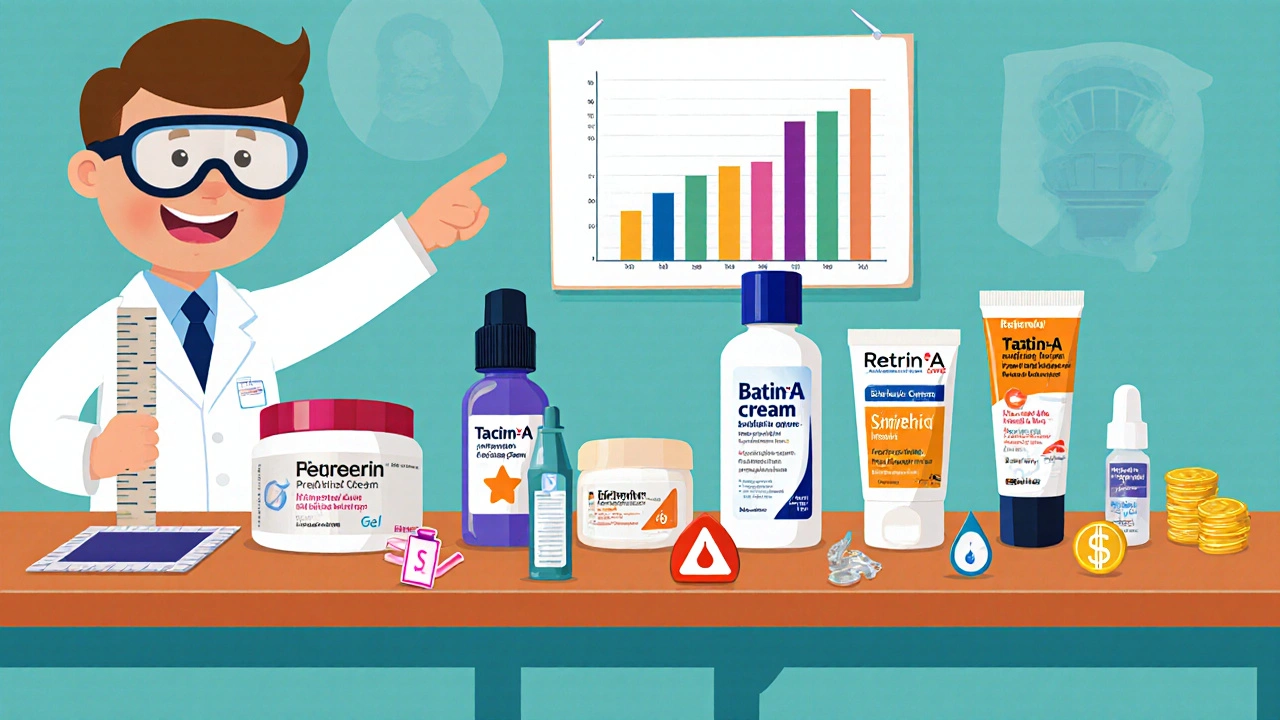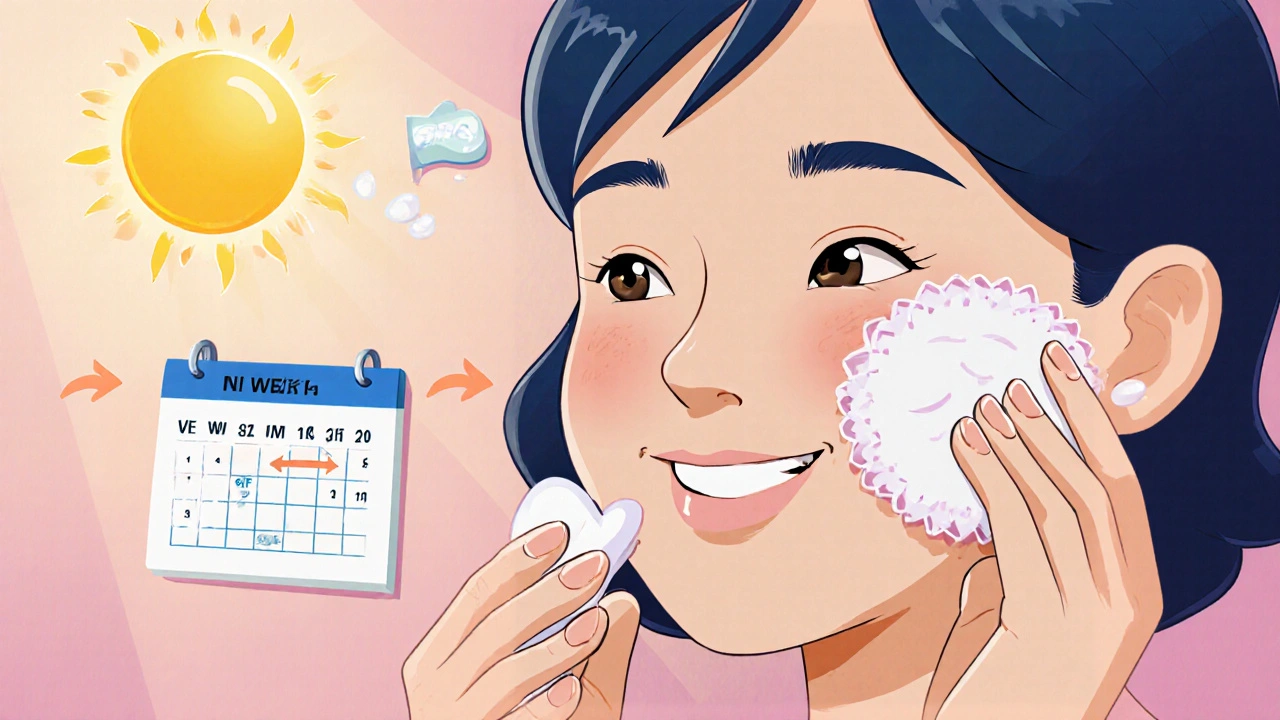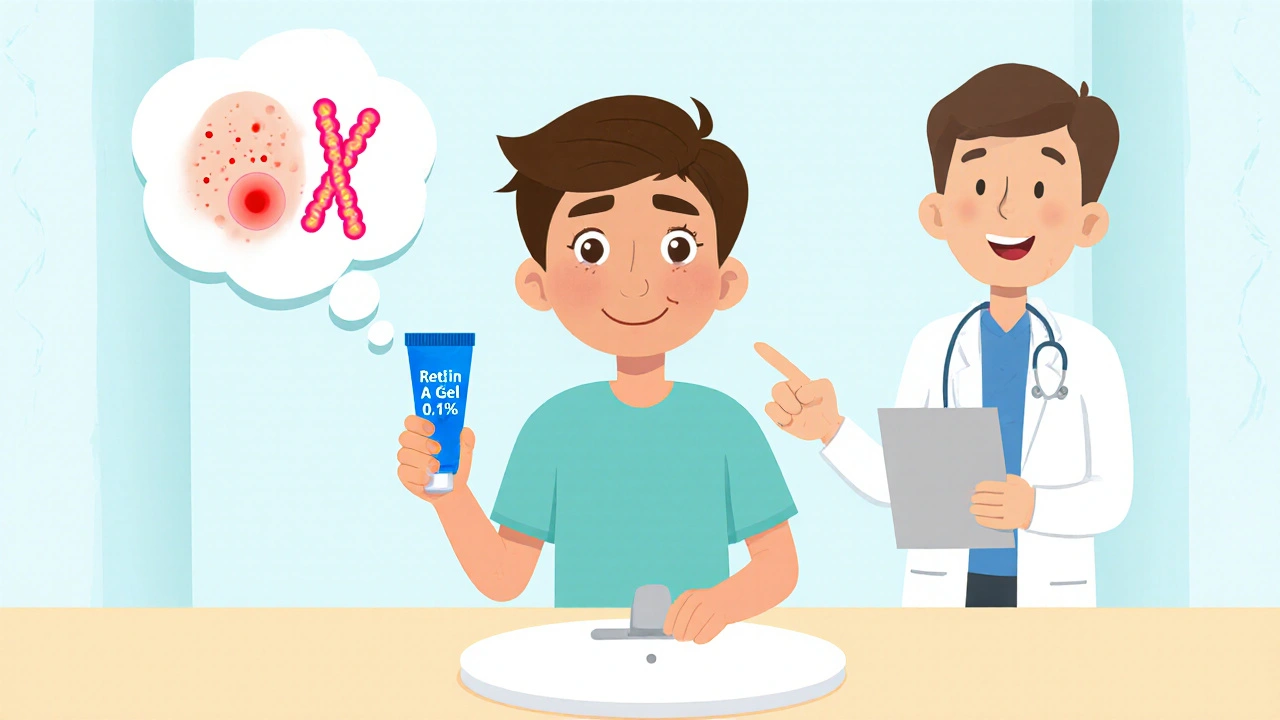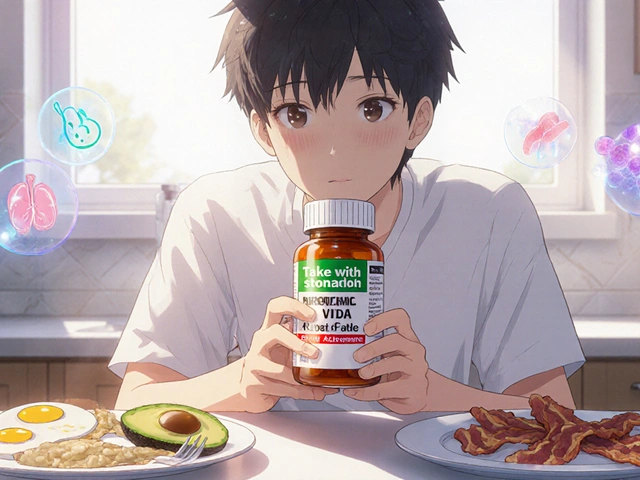Retinoid Selection Guide
Find Your Ideal Retinoid
Answer a few quick questions about your skin type and goals to get personalized recommendations for retinoid products.
Trying to decide whether Retin A Gel 0.1% is right for you? You’re not alone. This prescription retinoid has a reputation for delivering impressive results on acne and fine lines, but it also carries a learning curve that can turn beginners away. Below we break down how Retin A stacks up against the most common over‑the‑counter and prescription alternatives, so you can pick the formula that matches your skin goals, tolerance, and budget.
What is Retin A Gel 0.1%?
Retin A Gel 0.1% is a topical gel that contains 0.1% tretinoin, a synthetic derivative of vitamin A. It works by speeding up cell turnover, unclogging pores, and stimulating collagen production. Because it’s a prescription‑only medication in the UK and many other markets, a dermatologist typically evaluates your skin type before you start.
Key attributes:
- Strength: 0.1% (high‑potency for many users)
- Formulation: Gel, non‑comedogenic
- Typical uses: Moderate to severe acne, photo‑aged skin, hyperpigmentation
- Common side effects: Dryness, peeling, redness, possible initial breakout ("purging")
When used correctly, many patients notice smoother texture and fewer breakouts within 8‑12 weeks. The trade‑off is a higher risk of irritation, especially for sensitive skin.
How Do We Compare Retinoid Options?
To keep the comparison fair, we assess each product against the same criteria:
- Efficacy: How well it treats acne, fine lines, and pigmentation.
- irritation potential: Likelihood of redness, peeling, or stinging.
- Prescription status: Requires a doctor’s script or can be bought OTC.
- Cost per month: Approximate retail price for a typical 30‑day supply.
- Formulation type: Gel, cream, serum, or capsule‑based.
Armed with these metrics, we can see where Retin A shines and where other choices might be a better fit.
Top Alternatives in Detail
Differin Gel (adapalene 0.1%) is an OTC retinoid approved in the U.S. and EU. It’s milder than tretinoin, making it a common starter for newcomers. Adapalene binds to retinoic acid receptors with less irritation, but its collagen‑boosting effects are slightly weaker.
Tazorac (tazarotene 0.05% cream) is a prescription retinoid that is even more potent than tretinoin in some studies. It’s favored for severe psoriasis and deep wrinkles, yet the irritation profile can be harsh.
Retin‑A Micro (tretinoin 0.04% microsphere cream) offers a lower concentration delivered in a slow‑release matrix. The microsphere design reduces surface irritation while still providing the benefits of tretinoin.
Retinol (over‑the‑counter vitamin A) is the natural ancestor of prescription retinoids. It must be converted by skin enzymes to the active form, which makes it less effective but also gentler.
Bakuchiol (plant‑based retinol alternative) has gained popularity for its antioxidant properties and similarity to retinol’s anti‑aging effects, without the same irritation risk.
Azelaic Acid (15% cream) isn’t a retinoid, but it’s a proven acne and hyperpigmentation treatment that many use when retinoids are too harsh.

Side‑by‑Side Comparison Table
| Product | Active Ingredient | Strength | Prescription? | Efficacy (Acne / Anti‑aging) | Irritation Level | Approx. Monthly Cost (USD) |
|---|---|---|---|---|---|---|
| Retin A Gel 0.1% | Tretinoin | 0.1% | Yes | High / High | Medium‑High | $60‑$80 |
| Differin Gel | Adapalene | 0.1% | No | Medium / Medium | Low‑Medium | $15‑$30 |
| Tazorac | Tazarotene | 0.05% | Yes | High / Very High | High | $70‑$100 |
| Retin‑A Micro | Tretinoin (microsphere) | 0.04% | Yes | Medium‑High / High | Low‑Medium | $55‑$75 |
| Retinol Cream | Retinol | 0.3%-1% | No | Low‑Medium / Medium | Low | $20‑$45 |
| Bakuchiol Serum | Bakuchiol | 0.5%-1% | No | Low‑Medium / Medium | Very Low | $30‑$60 |
| Azelaic Acid 15% | Azelaic Acid | 15% | No | Medium / Low | Very Low | $25‑$40 |
Choosing the Right Option for Your Skin
Here’s a quick guide based on common skin scenarios:
- First‑time retinoid user: Start with Differin Gel or a low‑strength Retinol to gauge tolerance.
- Severe acne or deep wrinkles: Retin A Gel 0.1% or Tazorac deliver the strongest results, but plan for moisturising and gradual introduction.
- Sensitive or rosacea‑prone skin: Retin‑A Micro or Bakuchiol give similar anti‑aging benefits with a gentler feel.
- Budget‑conscious routine: Retinol or Bakuchiol provide decent results at a fraction of the prescription price.
- Pregnancy or breastfeeding: Avoid all retinoids; stick with Azelaic Acid or consult your doctor for safe alternatives.
Remember, the “best” product is the one you can use consistently without severe irritation.

Practical Tips for Using Retinoids Safely
- Start slow: Apply a pea‑size amount every third night, then increase frequency as tolerated.
- Buffer with moisturizer: Wait 15 minutes after applying the retinoid, then layer a fragrance‑free moisturizer to reduce dryness.
- Never mix with harsh actives: Skip benzoyl peroxide or strong exfoliating acids on the same night.
- Sun protection is mandatory: Use at least SPF 30 daily; retinoids thin the outer skin layer, making UV damage more likely.
- Watch for the “purge” period: A temporary flare‑up in the first 2-4 weeks is normal. If it lasts longer, talk to a dermatologist.
Following these steps usually cuts irritation in half and speeds up visible improvement.
Quick Checklist Before You Buy
- Do you have a prescription? (Required for Retin A Gel 0.1% and Tazorac)
- What is your current skin tolerance to actives?
- Is cost a primary factor?
- Do you need a gel, cream, or serum texture?
- Can you commit to daily sunscreen?
If you answered “yes” to a prescription and “no” to cost concerns, Retin A Gel 0.1% could be the winner. Otherwise, consider the lower‑strength or OTC alternatives listed above.
Frequently Asked Questions
Can I use Retin A Gel 0.1% with other acne treatments?
Yes, but space them out. Apply the retinoid at night and use benzoyl peroxide or salicylic acid in the morning. Avoid layering both on the same evening to prevent excess irritation.
How long does it take to see results?
Most users notice smoother skin and fewer breakouts after 8‑12 weeks of consistent use. Anti‑aging benefits, like reduced fine lines, may take 4‑6 months.
Is Retin A Gel safe during pregnancy?
No. All retinoids, including tretinoin, are contraindicated in pregnancy because of potential fetal risks. Opt for azelaic acid or consult your doctor for safe alternatives.
What’s the biggest difference between tretinoin and adapalene?
Tretinoin binds to multiple retinoic‑acid receptors, giving strong anti‑aging effects but higher irritation. Adapalene is more selective, so it’s gentler and available OTC, though its collagen‑boosting power is slightly lower.
Can I switch from Retin A Gel to a lower‑strength product?
Absolutely. If irritation becomes a problem, move to Retin‑A Micro or an OTC retinol product. Taper slowly to let your skin adjust.






Reviews
If you're just starting out with retinoids, take it slow and moisturize well.
Retinoids can be a game‑changer for acne and aging, but the key is understanding your skin's tolerance level; jumping straight into a 0.1% tretinoin gel without preparation is a recipe for irritation, which can lead to premature abandonment of an otherwise effective treatment; start with a low frequency, perhaps every third night, and monitor how your skin reacts, noting any persistent redness or excessive peeling that doesn't subside within a few days; during the initial weeks, a gentle, fragrance‑free moisturizer can act as a buffer, reducing transepidermal water loss and soothing the barrier; sunscreen becomes non‑negotiable once you introduce any retinoid, as the increased cell turnover makes the skin more photosensitive, so a broad‑spectrum SPF 30 or higher is essential every morning; if you experience the infamous “purge,” remember that this is often a temporary flare as underlying comedones rise to the surface, and it typically resolves within a month; should the irritation become intolerable, consider stepping down to a milder retinoid such as adapalene or a retinol formulation before attempting to re‑introduce tretinoin; always patch‑test a small area before full‑face application to gauge sensitivity; keep a skincare journal to track progress and side effects, which can help you and your dermatologist fine‑tune the regimen; while prescription retinoids like Retin‑A gel deliver robust results, they also demand a disciplined routine and patience; don’t be discouraged by early setbacks, as consistency over 8‑12 weeks is where the real benefits manifest; if you have underlying conditions like rosacea or eczema, consult a professional before starting any potent retinoid; layering other actives such as benzoyl peroxide or strong acids on the same night can exacerbate irritation, so stagger their usage; remember that diet, sleep, and stress also influence skin health and can affect how you respond to retinoids; finally, celebrate small victories - even a slight reduction in breakouts or a subtle glow is a sign that your skin is adapting and improving.
When you look at the pharmacokinetic profile of tretinoin, the drug’s lipophilicity facilitates deep dermal penetration, which is why you see accelerated keratinocyte turnover; combine that with a barrier‑repairing ceramide serum to mitigate transepidermal water loss, and you’re optimizing both efficacy and tolerability 😊.
Most people overreact to tretinoin
Indeed, the concentration of tretinoin in a 0.1% gel, while potent, can be managed effectively with proper adjuncts, such as a ceramide‑rich moisturizer, a gentle cleanser, and, above all, diligent sun protection, which together create a synergistic protocol that minimizes adverse reactions and maximizes therapeutic outcomes!
Starting slow really helps.
Patience is the unsung hero of any retinoid journey; the skin’s barrier needs time to rebuild after the initial exfoliation phase, and a well‑chosen moisturizer can turn that uncomfortable period into a soothing ritual; remember, dramatic results rarely happen overnight, but the steady glow that follows is worth every patient night.